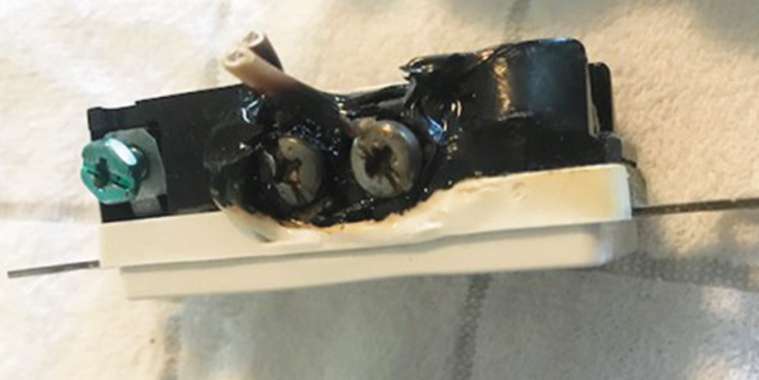“They don’t make things the way they used to!”
That’s a saying we hear more frequently these days, though in a few cases, the opposite is true — older doesn’t necessarily mean better. If you live in — or seek to buy — an older home, then the electrical service and wiring could be outdated. Read on for some important information and considerations surrounding aging electrical.
About electrical service and distribution
Electrical service refers to the main panel inside of your home connecting the cables coming from the exterior meter to the breaker (or fuse) panel. Homes usually have a 60 or 100 amp electrical service, which connects to either a fuse or breaker panel.
But wait . . . what’s an amp? Simply put, an amp (short for ampere) is a unit of measure for the volume of power or maximum load used by any appliance or device used to control the flow of power or which requires electricity to operate.
Check for outdated electrical
Not sure whether or not your electrical is outdated? Here are some indicators:
• 60 amp service – check your main service panel (the one with only a single (or doubled) switch);
• Aluminum wiring – connectors, bridges, junctions, outlets and switches need to be serviced and replaced after 40-50 years;
• Fuse panel – standard in homes built before the mid-1950s
• Loose switches – crackling or snapping sounds when turning on lights could mean aging connectors;
• Flickering lights – this is an indicator of aging connectors in your light fixture or switch;
• Warm outlets and switches – These are called hotspots, and are caused by aging connectors and bridges;
• Loose plugs – Plugs should fit tightly into outlets, and loose fitting can result in dangerous electrical arcs;
• Overloading circuits – Older homes are often wired with fewer circuits, increasing the load on a single circuit, causing blown fuses and tripping breakers;
• You do not have GFCI (ground fault circuit interrupter) outlets in your kitchen, bathroom, or adjacent to water sources;
• Your home still has two-pronged outlets – This means your electrical is not grounded, and may indicate knob and tube wiring or 60 amp service; and
• Rust spots on your service, distribution panels, and connectors.
If you’re unsure, and your home is older than 40 years, call a home inspector or certified electrician to come and inspect your service, distribution and wiring.
Pro tip: Periodically inspecting your switches, junctions, and outlets is good practice in general, no matter the age of your wiring.
Is it safe?
While the prospect of aging service and wiring, loose connections, and hot spots can certainly be alarming, don’t panic! In 2014, only 925 residential fires (less than 10% of residential fires) citing an electrical fault as the source were reported nation-wide.
Jeff McLaughlin, a master electrician with 47 years in the industry, shares with us the following safety insights:
• Aluminum wiring — Though aluminum wiring is generally safe, after 40-50 years, it needs to be addressed because loose connections can cause shorts and hotspots. The image of the burned receptacles above shows what can happen if old connections are left unaddressed.
Did you know? Aluminium wiring was used during the 1960s due to the high cost of copper at the time.
• Knob and tube wiring: This is the most unsafe wiring, and while rare, it can still be found in some century homes.
• Grounding: There was no grounding before the 1960s, which is needed for modern service and breakers to function properly. While updating is not mandatory due to grandfathering, it’s recommended to update your old electrical system with grounding.
• 60 amp service — Since this type of service was never designed to handle the loads of modern living, it’s possible to overheat your service by pulling too much power through it. If your service panel feels warm or hot to the touch, this is a good indicator that it’s time to upgrade to 100 amps.
• Fuses — Since older homes have more outlets to a single circuit, it’s easy to overload and blow a fuse. The risk is when homeowners don’t understand the risks of uploading. Uploading is when you replace a fuse with a higher load fuse to keep it from blowing. This becomes dangerous because the wires and connectors are rated to the load of the original fuse—usually the standard of 15 amps—and can overheat and burnout connections, causing hotspots and shorts.
Can this impact my insurance?
In short, yes. The age and type of electrical can impact your insurance rates and coverage profoundly. We reached out to Josh Hansen of Mitchell and Whale Insurance Brokers Ltd. to shed some light on three main electrical concerns.
• Knob and tube wiring: Most insurance companies will not provide coverage, and non-standard insurers are required at much higher premiums and restrictions on coverage.
• Aluminium wiring: Some insurers will require your system to be certified, plus periodic re-certifications from your provincial electrical code safety authority (eg: ESA in Ontario), every few years.
• 60 amp service: Not all providers will cover for 60 amp service, and those that do may require certain criteria to be met before coverage is provided. Criteria may include but are not limited to the number and age of occupants and total square footage of the home.
Hire a professional
This is an area where unless you’re experienced with electrical work, avoid DIY and contact certified and insured professionals. When choosing a contractor, McLaughlin advises to verify their references, experience, certification, and compare pricing. If you insist on doing any electrical work yourself, you will still need to get it certified for insurance purposes.
Whether you’re currently living in a home with aging wiring, or on the hunt for your century dream home, it’s best to be prepared for any possibility. Conducting your own inspections, monitoring your loads, and relying on professionals when the job demands it will go a long way to ensure the safety and comfort of you and your family.
— Realtor.ca



